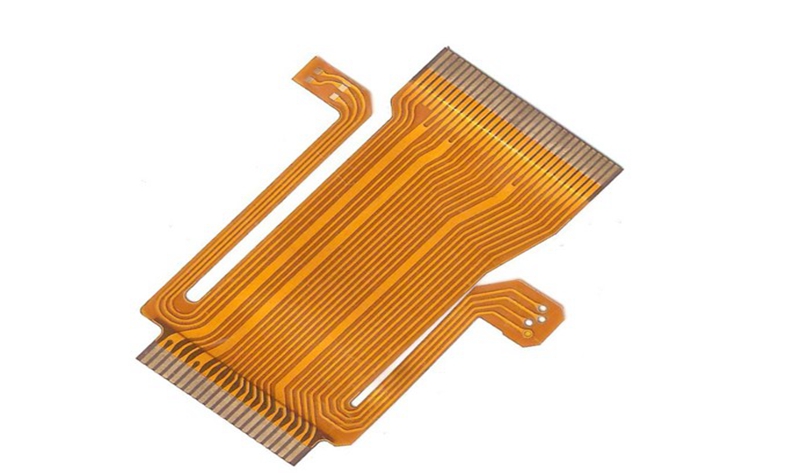Flexible circuit boards are currently classified as: single-sided, double-sided, and multilayer flexible boards.
① The single-sided flexible board is the printed board with the lowest cost and low electrical performance requirements. For single-sided wiring, single-sided flexible boards should be used. It has a layer of chemically etched conductive pattern, and the conductive pattern layer on the surface of the flexible insulating substrate is a rolled copper foil. The insulating substrate may be polyimide, polyethylene terephthalate, aramid fiber ester, and polyvinyl chloride.
② 2 Sided Flexible Circuit Board Material is a conductive pattern made by etching one layer on each side of the insulating base film. The metallization holes connect the patterns on both sides of the insulating material to form conductive paths to meet the design and use functions of flexibility. The cover film protects single and double-sided wires and indicates where the component is placed.
③ Multi-layer flexible board is a single-sided or double-sided flexible circuit with 3 or more layers laminated together, forming metallized holes by drilling collar L, electroplating, and forming conductive paths between different layers. This eliminates the need for complicated welding processes. Multilayer circuits have huge functional differences in terms of higher reliability, better thermal conductivity, and easier assembly performance. When designing the layout, the interaction of assembly size, number of layers and flexibility should be considered.
2 Sided Flexible Circuit Board Material
First, the advantages of flexible circuit boards
1. Flexibility: A significant advantage of applying flexible circuit boards is that it can be more easily routed and connected in three-dimensional space, and can also be rolled or folded for use. As long as it is curled within the allowable radius of curvature, it can withstand thousands to tens of thousands of uses without damage.
2. Reduced volume: In the assembly of the module, the conductor cross section of the flexible circuit board is thin and flat compared to the use of cable, which reduces the size of the wire and can be formed along the casing, making the structure of the device more compact and reasonable. , Reducing the installation volume. Compared with rigid PCB, space can be saved by 60 ~ 90%.
3. Reduce weight: In the same volume, the ratio of flexible circuit board to wire and cable can be reduced by about 70% under the same current carrying capacity, compared with rigid PCB, the weight is reduced by about 90%.
4. Consistency of installation: Installation with flexible circuit boards eliminates errors when wiring with wires and cables. As long as the processing drawings are proofread, all the winding circuits produced in the future are the same. No misconnection will occur when connecting the cables.
5. Increased reliability: When the flexible circuit board is used for installation, because it can be wired on the three planes of X, Y, and Z, the number of transfer interconnections is reduced, which increases the reliability of the entire system and checks for failure Provides convenience.
6. Controllability of electrical parameter design: According to the requirements of use, designers can control capacitance, inductance, characteristic impedance, delay and attenuation when designing flexible circuit boards. Can be designed to have transmission line characteristics. Because these parameters are related to wire width, thickness, pitch, insulation layer thickness, dielectric constant, loss tangent, etc., this is difficult to achieve when using wire cables.
7. The entire end can be soldered: Like Rigid PCB, the flexible circuit board has terminal pads, which can eliminate the stripping and tinning of the wires, thereby saving costs. Terminal pads are connected to components, devices, and plugs. Manual soldering of each wire can be replaced by dip soldering or wave soldering.
8. Material usage is optional: Flexible circuit boards can be manufactured with different base materials according to different application requirements. For example, in assembly applications that require low cost, polyester films can be used. In demanding applications, excellent performance is required, and polyimide films can be used.
9. Low cost Installation with flexible circuit boards can reduce the total cost.
The above is the classification and advantages of flexible circuit boards introduced by PCB Board Factory.

没有评论:
发表评论